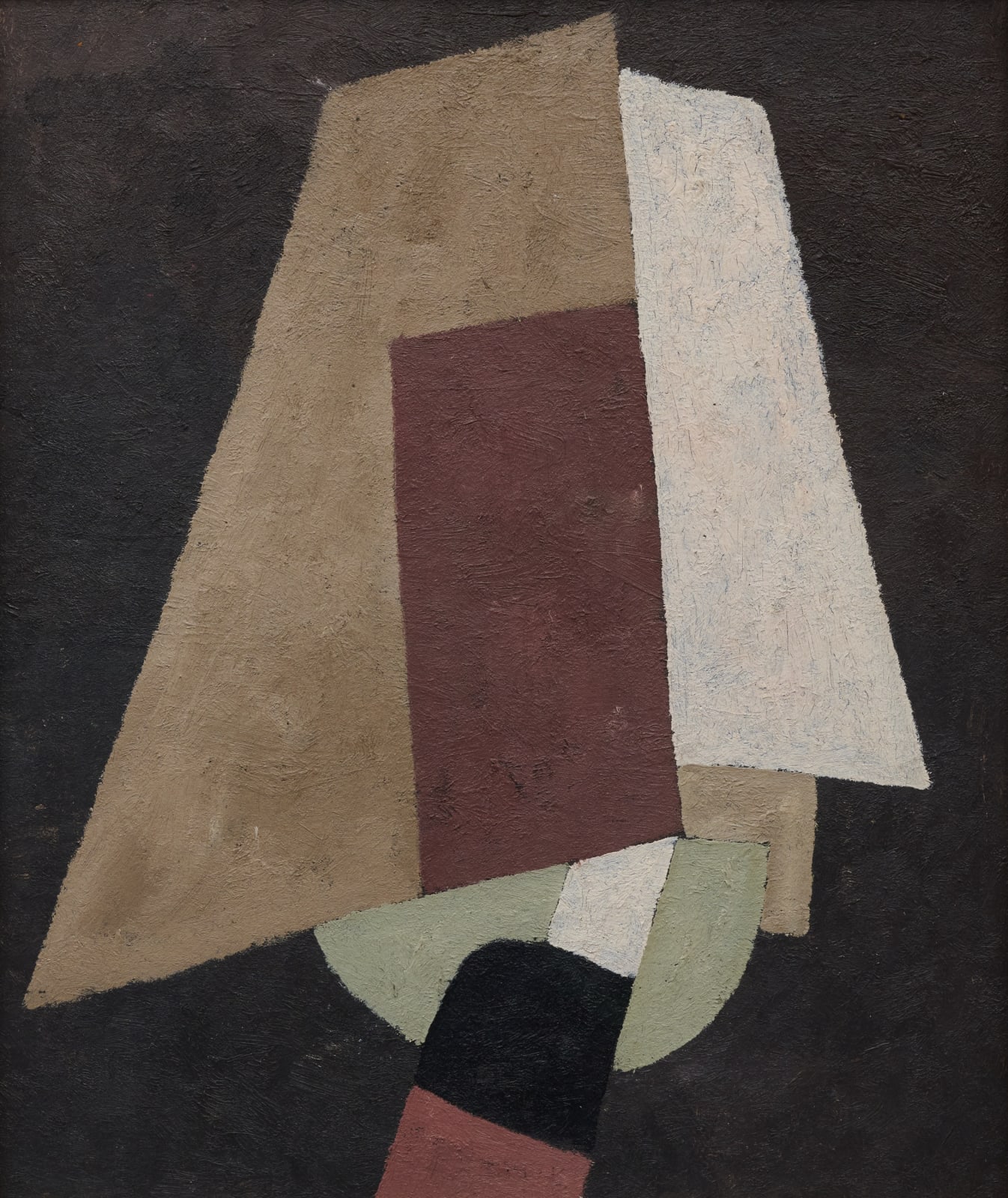-
Marsden Hartley American, 1877-1943
Movement No. 11, c. 1916Oil on board24 x 20 inches
61 x 50.8 cmSigned and inscribed on verso: Movement No 11 / Marsden HartleyThis work is included in Gail R. Scott’s Marsden Hartley Legacy Project: Complete Paintings and Works on Paper with Bates College Museum of Art. Marsden Hartley painted Still Life circa...This work is included in Gail R. Scott’s Marsden Hartley Legacy Project: Complete Paintings and Works on Paper with Bates College Museum of Art.
Marsden Hartley painted Still Life circa 1916 during a brief but impactful episode of his career, in which he worked in a style informed by Synthetic Cubism using a restrained color palette of stark black and soft pink, white, and grey hues. The artist began experimenting with this new mode of expression in Provincetown, Massachusetts, in summer 1916, when he made a series of works on fiberboard, many of which he titled Movement. Hartley continued working in the style through the following spring in Bermuda, where he had traveled with fellow artist Charles Demuth in December: “Hartley’s palette softened under the influence of the tropical ambience of Hamilton, with its pink and chocolate-brown houses and blue-green waters...These are cool paintings, delicate and refined, probably done under the spell of Demuth’s work.” [1]
During this period, Hartley’s subjects largely adhered to two categories: abstractions of sailboats, such as the present work, and still lifes of cocktails, wine glasses, and flowers on pedestal tables. Hartley’s arrangement of the forms parallel to the picture plane flattens pictorial space, recalling the collage-inspired compositions of Synthetic Cubism he encountered in Europe in 1912-15: "Hartley's Synthetic Cubist works of
the Provincetown summer were not only comparable to those being executed in Europe, but they would not be equaled by another American artist for ten years.” [2] This example features a particularly strong use of the artists's signature black. Though Hartley returned to a vivid color palette following this period, the type of quiet, distilled color in this work became a hallmark of twentieth-century painting central to the practice of many artists of contemporaneous and subsequent generations, including Giorgio Morandi, Andrew Wyeth, and Agnes Martin.[1] Gail Scott, Marsden Hartley, New York: Abbeville Press Publishers, 1988, 62.
[2] Barbara Haskell, Marsden Hartley, New York, 1980, 55.Provenance
The artist; to
Alfred Stieglitz, New York, circa 1916; to
Estate of the above, 1946; to
[Weyhe Gallery, New York, 1949]; to
Private collection, 1972 until the present
Literature
Elizabeth McCausland papers, 1838-1995, bulk 1920-1960, Series 6: Marsden Hartley, 1900-1964, Archives of American Art, Smithsonian Institution, Washington DC, EMC 14.9.31-32 handwritten datasheet; no image, as Movement No. 11
Subscribe to our mailing list to receive updates from the gallery
* denotes required fields
We will process the personal data you have supplied in accordance with our privacy policy (available on request). You can unsubscribe or change your preferences at any time by clicking the link in our emails.

